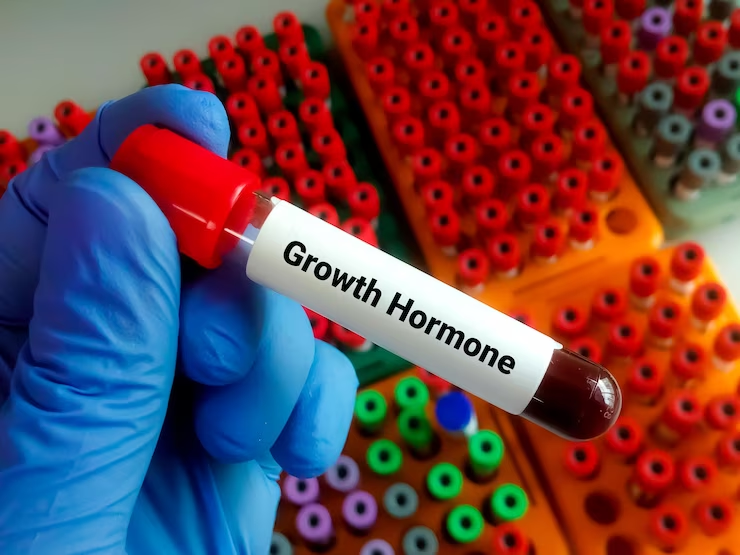Mulibrey Nanism, also known as Mulibrey Syndrome, is an extremely rare genetic disorder that affects growth and development. The term “Mulibrey” is an acronym that stands for muscle, liver, brain, and endocrine organs – all of which can be affected by this condition. In this article, we will delve into the causes, symptoms, and diagnostic features of Mulibrey Nanism, as well as available treatment options.
Causes: Mulibrey Nanism is caused by mutations in a gene called TRIM37, which is responsible for producing a protein involved in regulating cell growth and division. The exact function of the TRIM37 protein is not fully understood, but its role in normal growth and development is crucial. Mutations in the TRIM37 gene lead to the disruption of these processes, resulting in the characteristic features of Mulibrey Nanism.
Mulibrey Nanism follows an autosomal recessive inheritance pattern, meaning that both parents must carry a copy of the mutated gene for a child to be affected. When both parents are carriers, there is a 25% chance in each pregnancy for the child to inherit the condition.
Symptoms: Mulibrey Nanism is a multisystem disorder, meaning it affects multiple organ systems throughout the body. Some of the most common symptoms and characteristics associated with this condition include:
- Growth Retardation: Individuals with Mulibrey Nanism typically have severe growth retardation, both in terms of height and weight. This growth restriction is often noticeable from early childhood and continues throughout life.
- Facial Dysmorphism: Affected individuals may exhibit distinctive facial features, including a triangular-shaped face, a broad nasal bridge, widely spaced eyes, and a small jaw.
- Cardiac Involvement: Heart problems are common in Mulibrey Nanism. One of the most significant complications is a condition called constrictive pericarditis, where the sac around the heart becomes thickened and restricts its ability to pump effectively. This can lead to heart failure if left untreated.
- Liver Involvement: The liver may be affected, leading to hepatomegaly (enlargement of the liver), abnormal liver function, and an increased risk of developing liver tumors.
- Endocrine Abnormalities: Mulibrey Nanism can cause various endocrine disturbances, including insulin resistance, low blood sugar levels (hypoglycemia), and an increased risk of developing tumors in the endocrine glands.
- Muscle Involvement: Muscle weakness and reduced muscle tone (hypotonia) are common features of Mulibrey Nanism. This can contribute to delayed motor milestones and difficulties with mobility.
- Intellectual Disability: Some individuals with Mulibrey Nanism may experience intellectual disability or learning difficulties. However, the range and severity of cognitive impairments can vary widely.
- Other Features: Other less common features associated with Mulibrey Nanism may include vision problems, dental abnormalities, and skeletal abnormalities such as scoliosis (abnormal curvature of the spine).
Diagnosis and Management: Diagnosing Mulibrey Nanism can be challenging due to its rarity and the variability of its presentation. However, a combination of clinical evaluation, characteristic features, and genetic testing can aid in confirming the diagnosis.
As Mulibrey Nanism is a complex multisystem disorder, a multidisciplinary approach to management is essential. Treatment aims to address specific symptoms and complications associated with the condition. This may include:
- Cardiac Monitoring and Management: Regular cardiac evaluations, including echocardiograms, are important to monitor heart function and detect early signs of constrictive pericarditis or other cardiac abnormalities. Medications, surgical interventions, or pericardiectomy (removal of the pericardium) may be necessary to manage cardiac complications.
- Growth and Development Support: Children with Mulibrey Nanism may require growth hormone therapy to promote growth and catch up on height. Nutritional support and close monitoring of developmental milestones are also crucial.
- Endocrine Management: Close monitoring of blood sugar levels and appropriate management of insulin resistance and hypoglycemia are important. Regular surveillance for endocrine tumors may also be necessary.
- Supportive Care: Physical therapy and occupational therapy can help individuals with Mulibrey Nanism improve muscle tone, motor skills, and overall quality of life. Educational support and early intervention programs are important for optimizing cognitive development and learning potential.
- Surveillance and Early Detection: Regular surveillance for potential complications, such as liver tumors or vision problems, is necessary for early detection and intervention.
Genetic counseling is recommended for families affected by Mulibrey Nanism to provide information about the inheritance pattern, potential risks, and options for family planning.
In conclusion, Mulibrey Nanism is an exceptionally rare genetic disorder characterized by growth retardation, facial dysmorphism, cardiac involvement, and other associated features. Early recognition, accurate diagnosis, and multidisciplinary management are essential for optimizing the outcomes and quality of life for individuals with Mulibrey Nanism. Continued research and awareness of this condition are vital for improving diagnosis, treatment, and support for affected individuals and their families.










